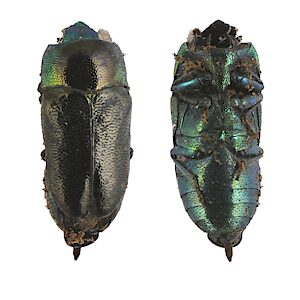Pronotum broad and with rounded sides marked by a well-defined lateral zone of metallic colouration. In the male the lateral margins are greenish from above (iridescent to blue at their anterior ends) and bright green in side view; in the female, somewhat coppery from above and pink-red in side view. Resembles N. thoracica (q.v. for differences listed there) but differing in its broader and flatter body shape, the somewhat depressed frons, narrower and more sharply defined metallic margins on the pronotum which is more often green in males, lack of golden reflections on the elytra, more extensive blue to green colouration below and a narrower tip to the aedeagus.
This taxon was treated on this website under the phrase name Neocuris sp. Subulate aedeagus until March 2021. There were relatively few specimens of N. cuprilatera from this State in the SA Museum, and most of them had been misidentified as N. thoracica including an old collection with the location 'S. Australia'.
Examination of specimens collected at Flinders Chase on Kangaroo Island over a number of years in a pollination study run by D. Paton revealed that there were good numbers of both N. cuprilatera and N. thoracica co-occurring there as distinct taxa with no sign of intergradation. Both are in reasonable agreement with the original descriptions by Fairmaire 1877b , although he described N. cuprilatera as being 'Dark shiny cyan'. In specimens from SA the background colour is usually dark grey to black and only a few individuals show some very weak bluish reflections. In eastern NSW, forms with strong blackish-blue coloration are common. The name Neocuris indigacea Obenberger (1923), regarded by Carter 1928 as a synonym of N. cuprilatera, has sometimes been applied to strongly bluish forms.
| Legend | records | count of breeding adults, pupae and larvae |
| sites | count of major sites (unique 10 km grid cells +/- some distinct approximate localities) |
| adult | live = extracted alive; dead = extracted dead as intact or fragmentary remains; ex billet = reared and emerged from stored sections of host; ex pupa = reared from sampled pupa |
| pupa | extracted pupa; pupa ex larva = reared pupa from larva |
| larva | extracted larva (any stage including prepupa) |
| gall (only) | hatched or unhatched gall identified by form and position rather than contents |
| Plant names in green are hyperlinked to a matching host species page with plant photos. |
| ¹ Legend | regions | SA State Herbarium regions (map)
EA: Eastern, EP: Eyre Peninsula, FR: Flinders Ranges, GT: Gairdner-Torrens, KI: Kangaroo Island, LE: Lake Eyre, MU: Murray, NL: Northern Lofty, NU: Nullarbor, NW: North-Western, SE: South-Eastern, SL: Southern Lofty, YP: Yorke Peninsula |
| size | The ellipse is the correct size when printed, indicative on a desktop screen, and likely to be wrong on a mobile device. |
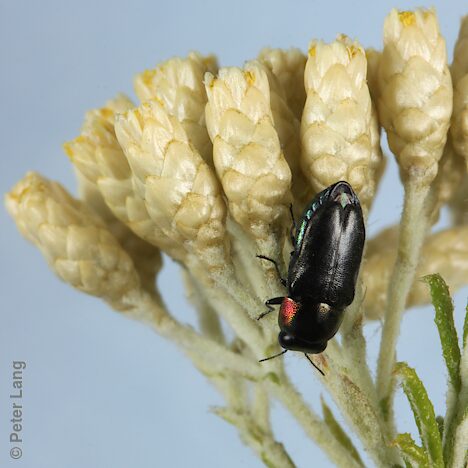
 stem, MU, A1_x468.jpg)
 stem, SE, A2_x468.jpg)
 stem, SE, A3_x300.jpg)
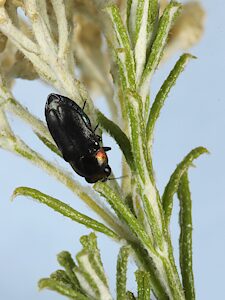
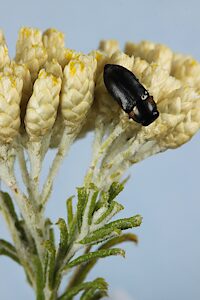
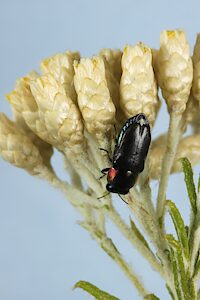

 stem, MU, A1_x468.jpg)
 stem, SE, A2_x468.jpg)
 stem, SE, A3_x300.jpg)



 stem, MU, P1_x300.jpg)
 stem, MU, P2_x300.jpg)
 stem, MU, P3_x300.jpg)
 stem, MU, P4_x300.jpg)
 stem, MU, P5_x300.jpg)
 stem, MU, P6_x300.jpg)
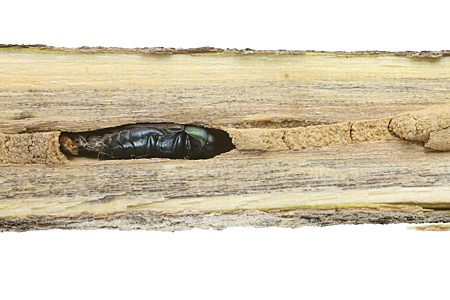
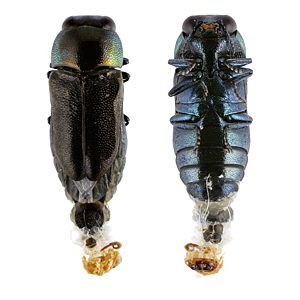
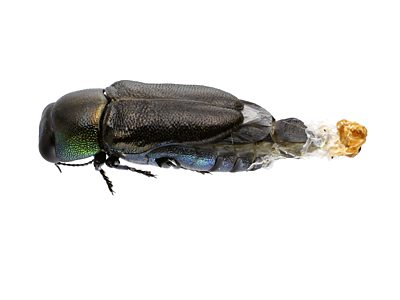
 stem, SE, D1_x300.jpg)
 stem, SE, D2_x300.jpg)
 stem, SE, D3_x300.jpg)
 stem, SE, D4_x300.jpg)
 stem, SE, D5_x300.jpg)
 stem, SE, D6_x300.jpg)
